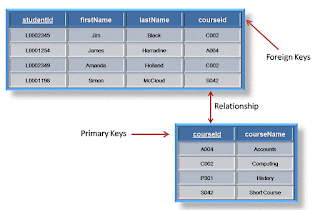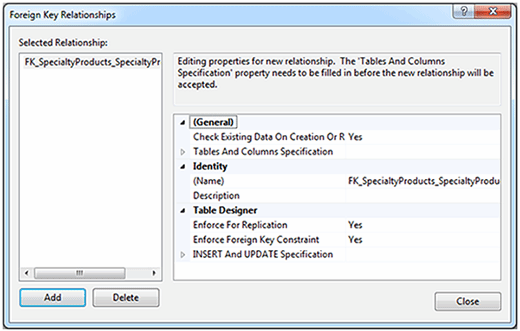DATABASE
.

DATABASE
A database is an organized collection of data, stored and accessed electronically. Database designers typically organize the data to model aspects of reality in a way that supports processes requiring information, such as (for example) modelling the availability of rooms in hotels in a way that supports finding a hotel with vacancies.Data is organized into rows, columns and tables, and it is indexed to make it easier to find relevant information. Data gets updated, expanded and deleted as new information is added. Databases process workloads to create and
update themselves, querying the data they contain and running applications against it.
DATABASE MANAGEMENT SYSTEM (DBMS)

A database management system (DBMS) is a software application that interacts with end users, other applications, and the database itself to capture and analyze data. A general-purpose DBMS allows the definition, creation, querying, update, and administration of databases. A database is generally stored in a DBMS-specific format which is not portable, but different DBMSs can share data by using standards such as SQL and ODBC or JDBC. Sometimes a DBMS is loosely referred to as a "database".
TABLE/FILE
A table is a collection of related data held in a structured format within a database. It consists of columns, and rows.A database table is composed of records and fields that hold data. Tables are also called datasheets. Each table in a database holds data about a different, but related, subject.
FOREIGN KEY
A foreign key is a column or columns of data in one table that connects to the primary key data in the original table.To ensure the links between foreign key and primary key tables aren't broken, foreign key constraints can be created to prevent actions that would damage the links between tables and prevent erroneous data from being added to the foreign key column.

Data is stored in records. A record is composed of fields and contains all the data about one particular person, company, or item in a database. In this database, a record contains the data for one customer support incident report. Records appear as rows in the database table. A record for Log ID 1201242 is highlighted in Figure 3.
FIELD
A field is part of a record and contains a single piece of data for the subject of the record. In the database table illustrated in Figure 4, each record contains four fields:
| Log ID | A number assigned to this customer support incident for identification purposes |
| Operator | The code for the customer support operator who handled this incident |
| Resolved | A check box to indicate whether the incident was resolved |
| Duration | The time in seconds the operator spent on this incident |
Fields appear as columns in a database table. Data from the Log ID field for five records is highlighted in the Figure 4.
REPORT
A report presents data in an attractive format and is especially suitable for printing. Reports can display data from tables or queries. All or selected fields can be included in a report. Data can be grouped or sorted and arranged in a variety of ways.
Figure 11 shows a report containing data from the Complaints table. The data is grouped by resolved and unresolved incidents. The Log ID field is sorted in ascending order. Compare the format of the data in this report to the database table shown in Figure 12.


FORM
A database form shows all or selected fields for one record. Forms show field names and data in an attractive and easy-to-read format. Record 1 of the database is shown in Figure 5.
Figure 5 Database Form
You can enter data in fields in a form just as you can in a table. Data has been entered in three fields in the form shown in Figure 6. Navigation buttons for moving from record to record are displayed at the bottom of the form.

QUERY
A query finds records in a database according to criteria you specify. Sometimes working with all the data in a large database is not practical. You might wish to work with just a small part or subset of the data. For example, you might want to find records for unresolved customer support incidents. A query can be used to display these records. You could construct the query to display only selected fields, such as Log ID and Resolved. A query displays only the data you request.
The table in Figure 9 shows all data that has been entered in the database. An empty checkbox in the Resolved field indicates the incident has not been resolved.

Figure 10 shows the results of a query. Only the Log ID and Resolved fields for unresolved incidents are displayed.

PRIMARY KEY
Tips for Choosing Good Primary Keys
When you choose the right primary key, database lookups are speedy and reliable. Just remember:
- Keep it short. Because the primary key is used for lookups and comparisons, a short primary key means the database management system can process it more quickly than a long primary key.
- Use a number for the primary key whenever possible. SQL Server or other database management systems process number data types faster than character data types.
- Keep it simple. Don't use any special characters, embedded spaces, or a mix of upper and lower capitalization.
- Never change the primary key after you assign it.
Differences between primary and foreign keys

A primary key in the original table, or parent table, can be targeted by multiple foreign keys from other "child" tables. But a primary key does not necessarily have to be the target of any foreign keys. A primary key is a column or a set of columns that identify a row in a table. A foreign key, however, is in a table that is different from the table that the primary key must match.
Microsoft Access is a database management system (DBMS) from Microsoft that combines the relationalMicrosoft Jet Database Engine with a graphical user interface and software-development tools. It is a member of the Microsoft Office suite of applications, included in the Professional and higher editions or sold separately.
Microsoft Access stores data in its own format based on the Access Jet Database Engine. It can also import or link directly to data stored in other applications and databases.[1]






Comments
Post a Comment